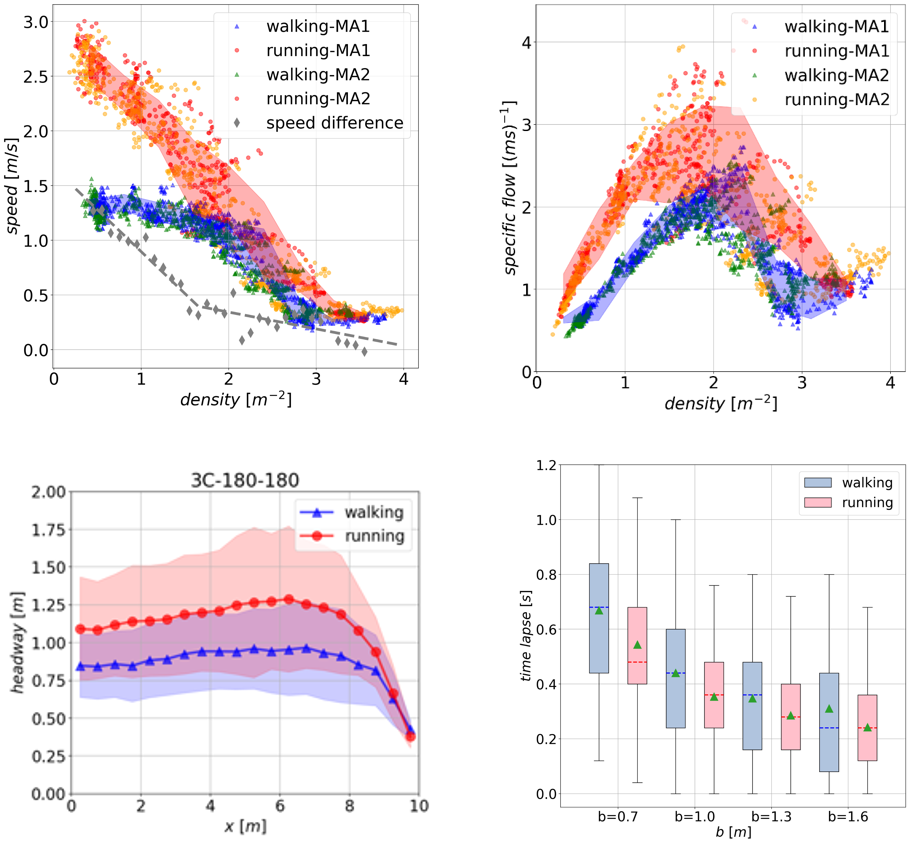Flows of walking and running pedestrians in a corridor through exits of different widths

Problem & Motivation
The safe and efficient evacuation through a building under emergencies is of vital important for the people's lives. Running will be the preferentially selected movement way in the evacuation. The corridor with narrow exit tends to form high density due to the gathering of crowds.
The existing researches are mainly limited to the experiment under normal-condition for the sake of safety. Little is known about the difference of the running and walking flow through the corridor with different wide exits
Methods
The walking and running pedestrian flows through exits of different widths in a 10 m long corridor are studied experimentally. The speed-density and flow-density relations are analyzed through the fundamental diagrams. The relatively free (constrained) phase is found when the density is lower (higher) than 1.65 m-2 through the piecewise linear fitting of speed differences. When the density is higher than 1.65 m-2, the speed advantage in evacuation is obviously weakened due to the limitation of density.
The flow rate and time lapse are studied to evaluate the evacuation efficiency of different movement ways. The flow rate differences of the walking and running flows decrease as the exit narrows. The running flow is associate with longer distance headway in the corridor and is more continuous at the exit, compared to the walking flow. When carrying out crowd management and guidance, we should comprehensively consider the movement status and density of the crowd.

Related Publication
Ren, X., Zhang, J., & Song, W. Flows of walking and running pedestrians in a corridor through exits of different widths. Safety Science, 133, 105040. Safety Science, 133, 105040.
Download: [Paper]

